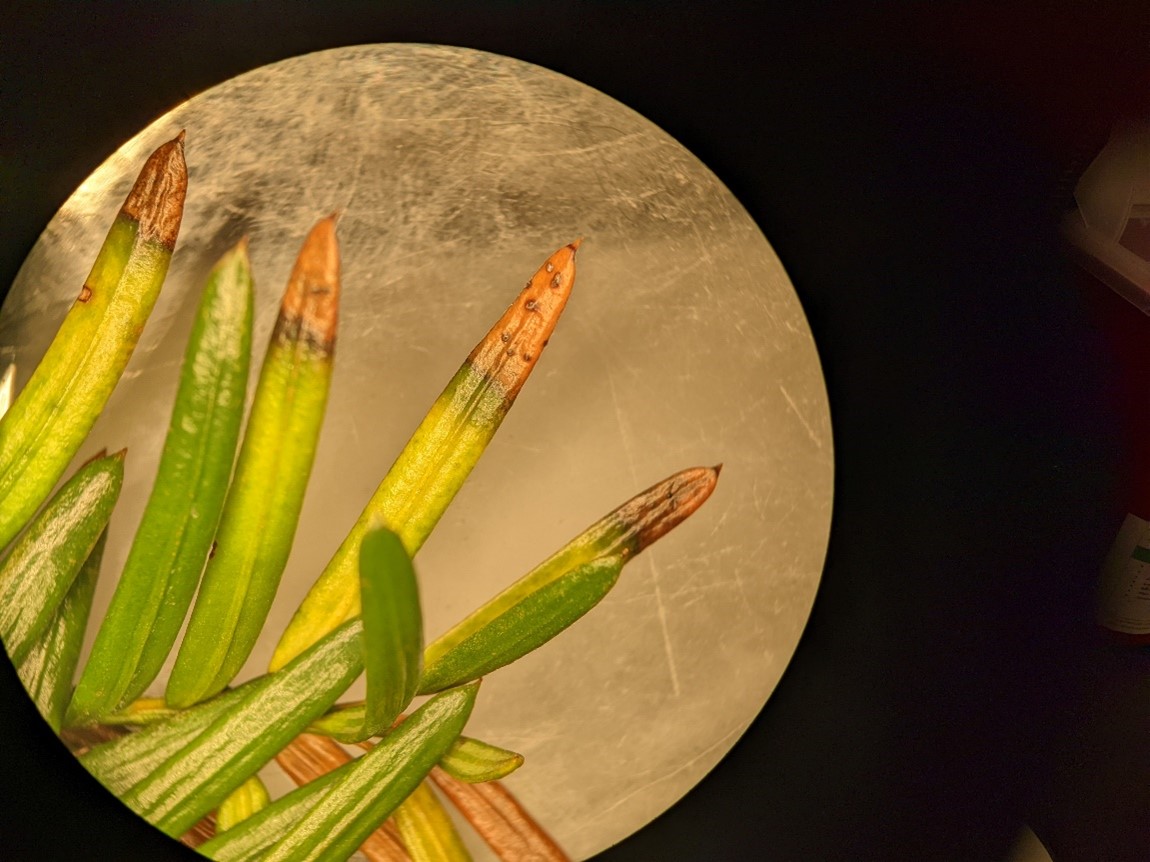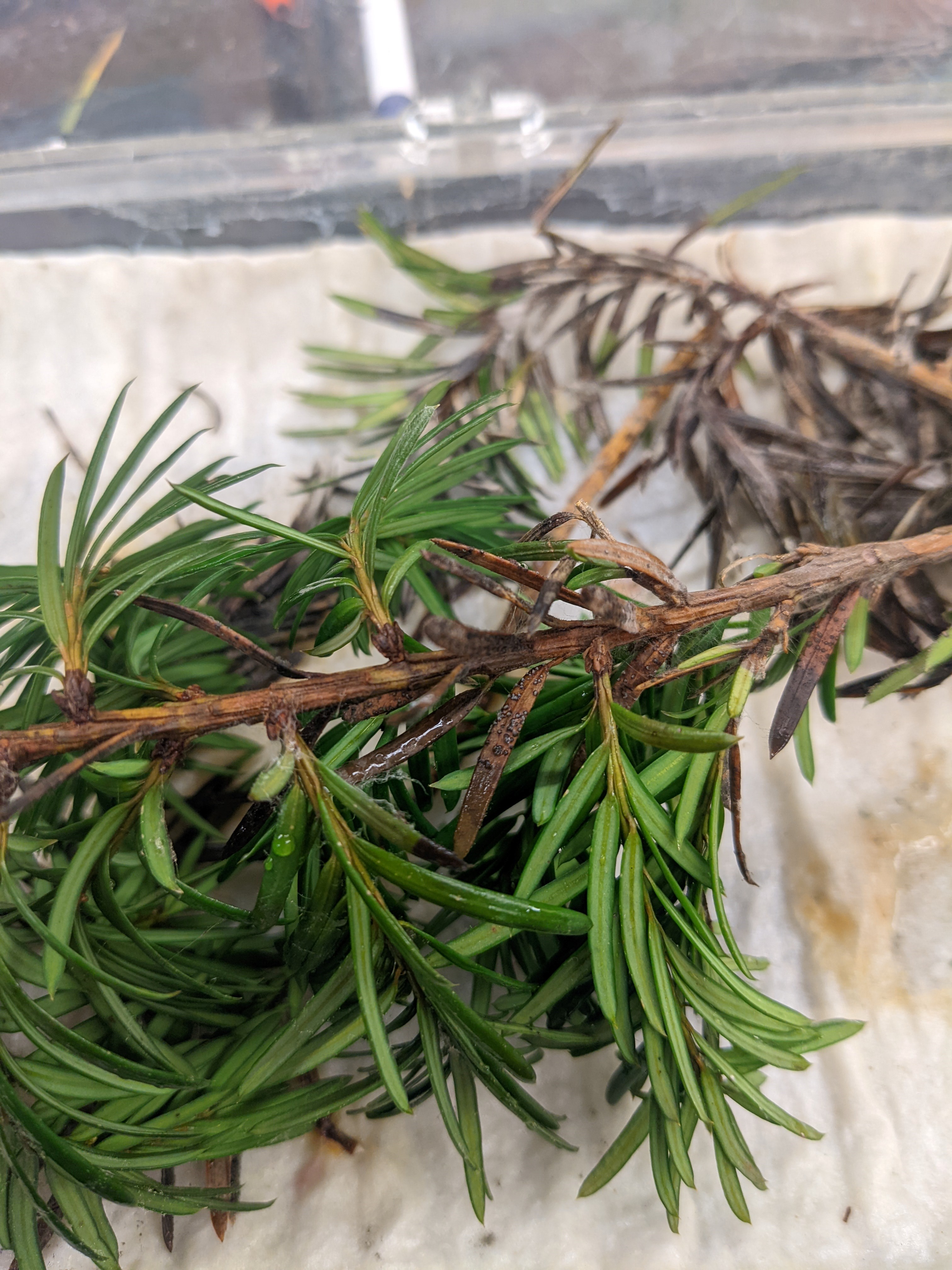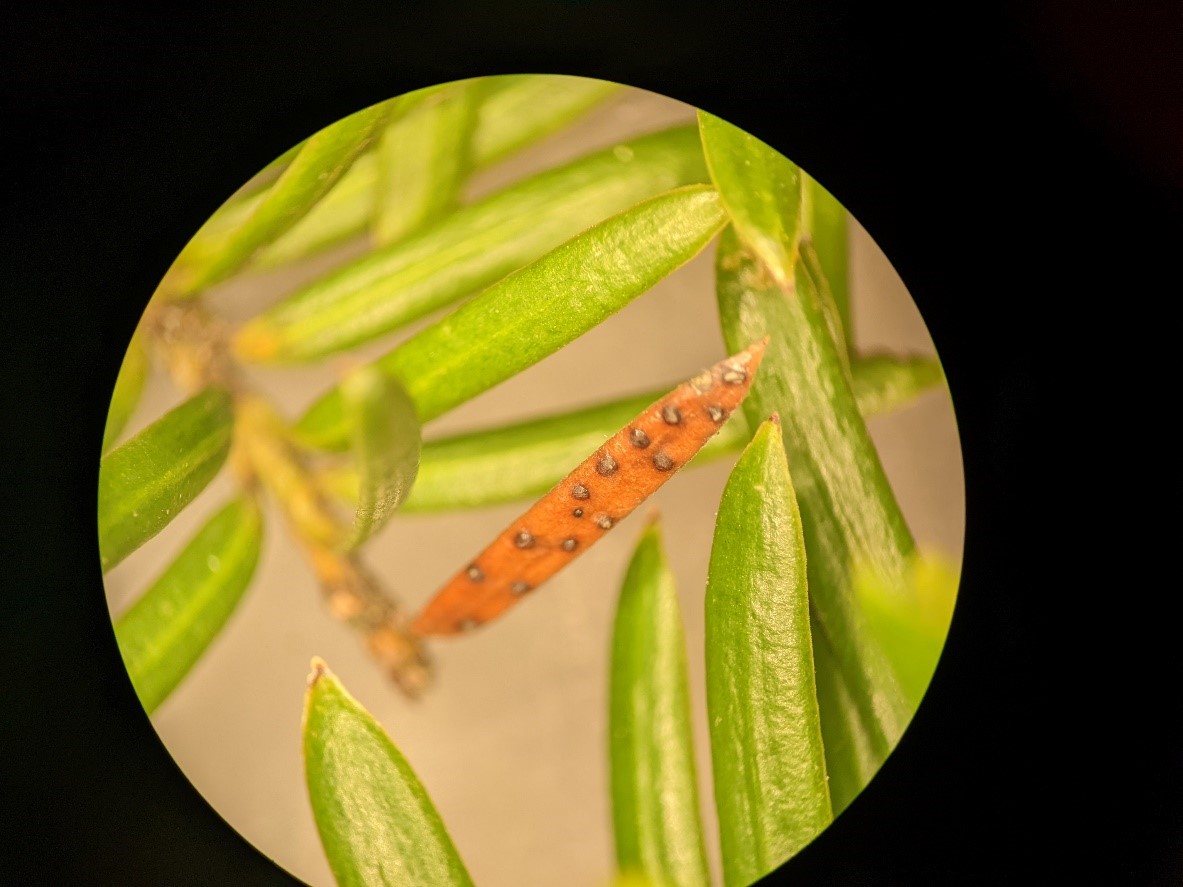Issue 4, June 8, 2022
Cryptocline Needle Blight of Yew
The Plant Clinic has seen an increase in the number of yew samples diagnosed with Cryptocline needle blight in the past few years. This fungal needle disease does not appear to be one of great concern given the lack of information about it in the literature. It has been reported in New England and eastern Canada on a few different species of yew. In the past few years, it has been confirmed on samples from Champaign, Cook, Lake, and Tazewell counties in Illinois.
Symptoms can occur on current and previous years’ needles. Needles develop chlorotic spots, bands, or the entire needle can turn light yellow. These areas then become brown and necrotic, and eventually, small black fruiting bodies develop on the surface of the needles.



According to what little information is available, humid environmental conditions favor development of this disease. Plants under stress due to improper site selection, poor soil quality, or adverse environmental factors appear to be more susceptible to this disease. Management consists of reducing plant stress and pruning out diseased tissue during dry weather. A fungicide containing copper labeled for use on evergreens against needle blights may be of use. Always follow label instructions for any product you choose to apply.
We recommend maintaining plant vitality by watering during periods of dryness during the growing season, lightly mulching the base of the plant, pruning out dead branches during dry weather, and fertilizing in spring right before new growth expands (usually in late March or early April). A light application of a slow or timed released fertilizer can also be used in late summer or early fall for especially stressed plants. According to the Manual of Woody Landscape Plants, 6th Ed., yew do best in fertile soil with sufficient moisture and excellent drainage. Yew plants do not tolerate soggy or water-logged soils; these conditions lead to plant stress, damage, and even death. Yews can be grown in sun or shade conditions. Ideally, they are protected from strong winds which can lead to needle desiccation. Generally, yews do not tolerate extremely hot or cold temperatures, but they should thrive across most of Illinois if planted in the right spot. Yew are unfortunately very tempting to deer.
Author:
Diane Plewa